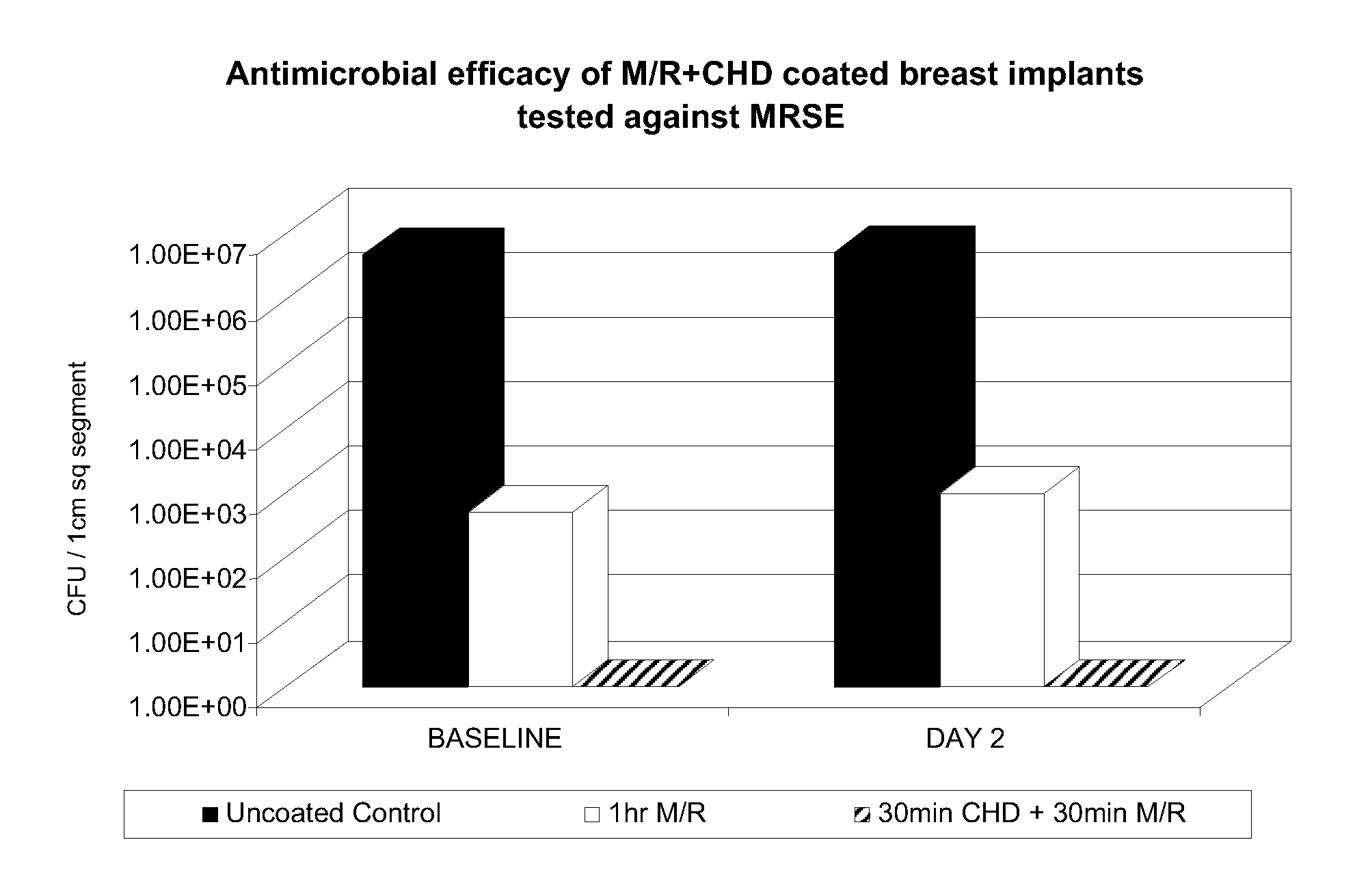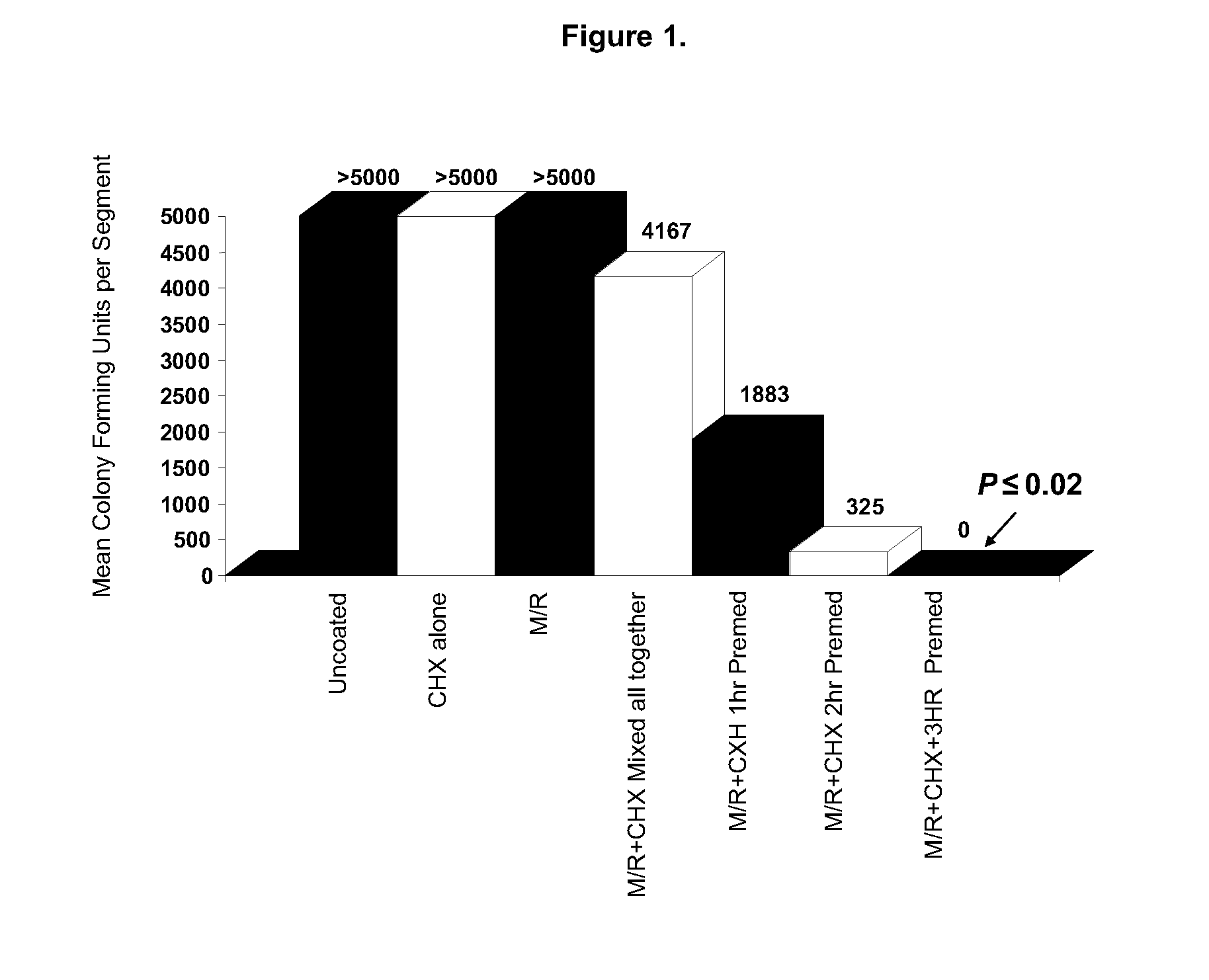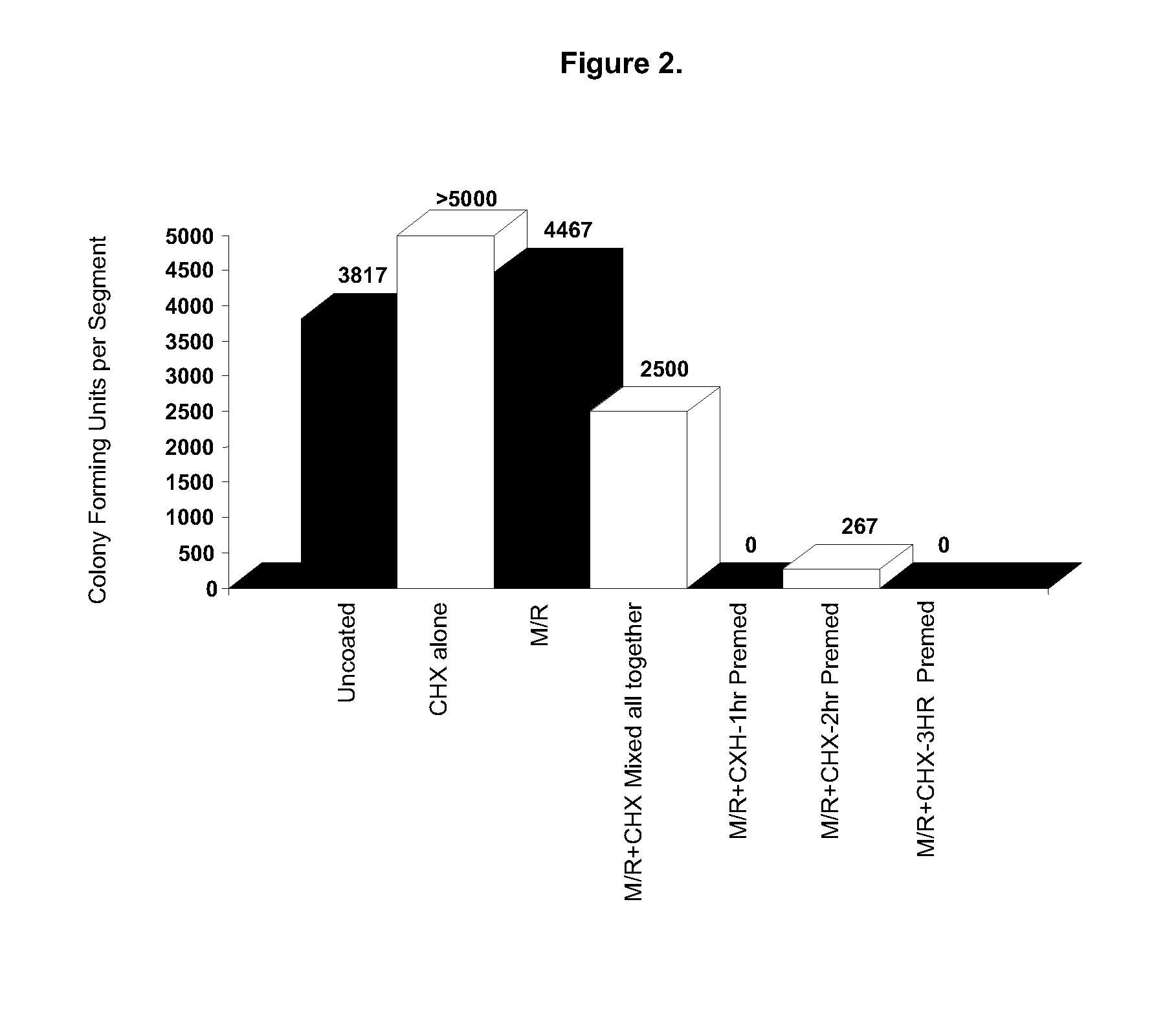Method for imparting antimicrobial activity to a medical device
a medical device and antimicrobial technology, applied in the field of medical devices imparting antimicrobial activity, can solve the problems of serious patient problems, complicated use of cvcs, and colonization of microbials on the surface or other parts of the catheter
- Summary
- Abstract
- Description
- Claims
- Application Information
AI Technical Summary
Problems solved by technology
Method used
Image
Examples
example 1
[0048]In this example, comparative tests were carried out to compare the antimicrobial activity on central venous catheter (CVC) segments. Three Positive Control Samples were prepared according to known methods. Five Inventive Samples were prepared according to a method of the present invention.
[0049]Those skilled in the art will appreciate that the respective concentrations of the solutions of the first antimicrobial component, in this case chlorhexidine, and the second antimicrobial component, in this case minocycline / rifampin, as described in the following examples are exemplary only, and that other concentrations, as well as other ratios of CHX to M / R, may be substituted. When the teachings of this method are utilized, only minimal experimentation will be required to arrive at concentrations and application conditions appropriate for use in imparting antimicrobial activity to a particular medical device that is intended to be utilized for a particular purpose.[0050]POSITIVE CONT...
example 2
[0162]In this example, comparative tests were carried out on silicone breast implant segments. In use, the coating solution can be applied to implants in the operating room immediately prior to surgery to reduce the risk of microbial biofilm formation. As stated, medical devices impregnated with antimicrobials have been shown to significantly reduce and prevent incidence of infection. Breast augmentation or reconstruction with implants has been associated with colonization of Staphylococcus epidermidis often resulting in capsular contracture.
[0163]Coating Procedure: In the comparative tests as described below, segments of silicone breast implant shells were coated in the following manner:[0164]POSITIVE CONTROL SAMPLE:[0165]300 mg of Minocycline and 600 mg of Rifampin were dissolved in 20 mL of MetOH. Segments were coated for 60min in the M / R solution. Segments were then dried in ambient conditions for 10 minutes.[0166]The concentrations of drug in the test solution was 15 mg / mL Mino...
PUM
| Property | Measurement | Unit |
|---|---|---|
| temperature | aaaaa | aaaaa |
| temperature | aaaaa | aaaaa |
| time | aaaaa | aaaaa |
Abstract
Description
Claims
Application Information
 Login to View More
Login to View More - R&D
- Intellectual Property
- Life Sciences
- Materials
- Tech Scout
- Unparalleled Data Quality
- Higher Quality Content
- 60% Fewer Hallucinations
Browse by: Latest US Patents, China's latest patents, Technical Efficacy Thesaurus, Application Domain, Technology Topic, Popular Technical Reports.
© 2025 PatSnap. All rights reserved.Legal|Privacy policy|Modern Slavery Act Transparency Statement|Sitemap|About US| Contact US: help@patsnap.com



